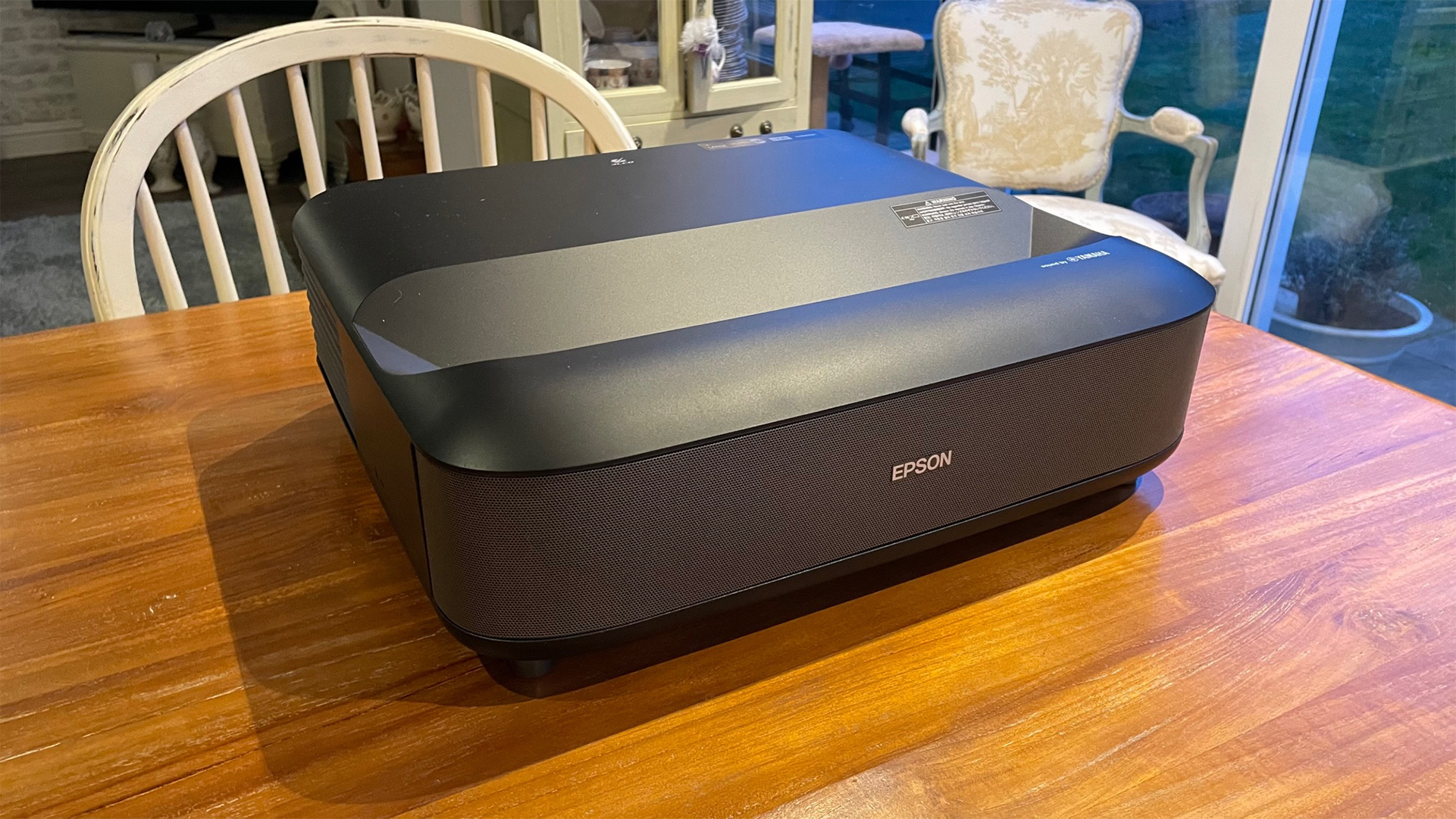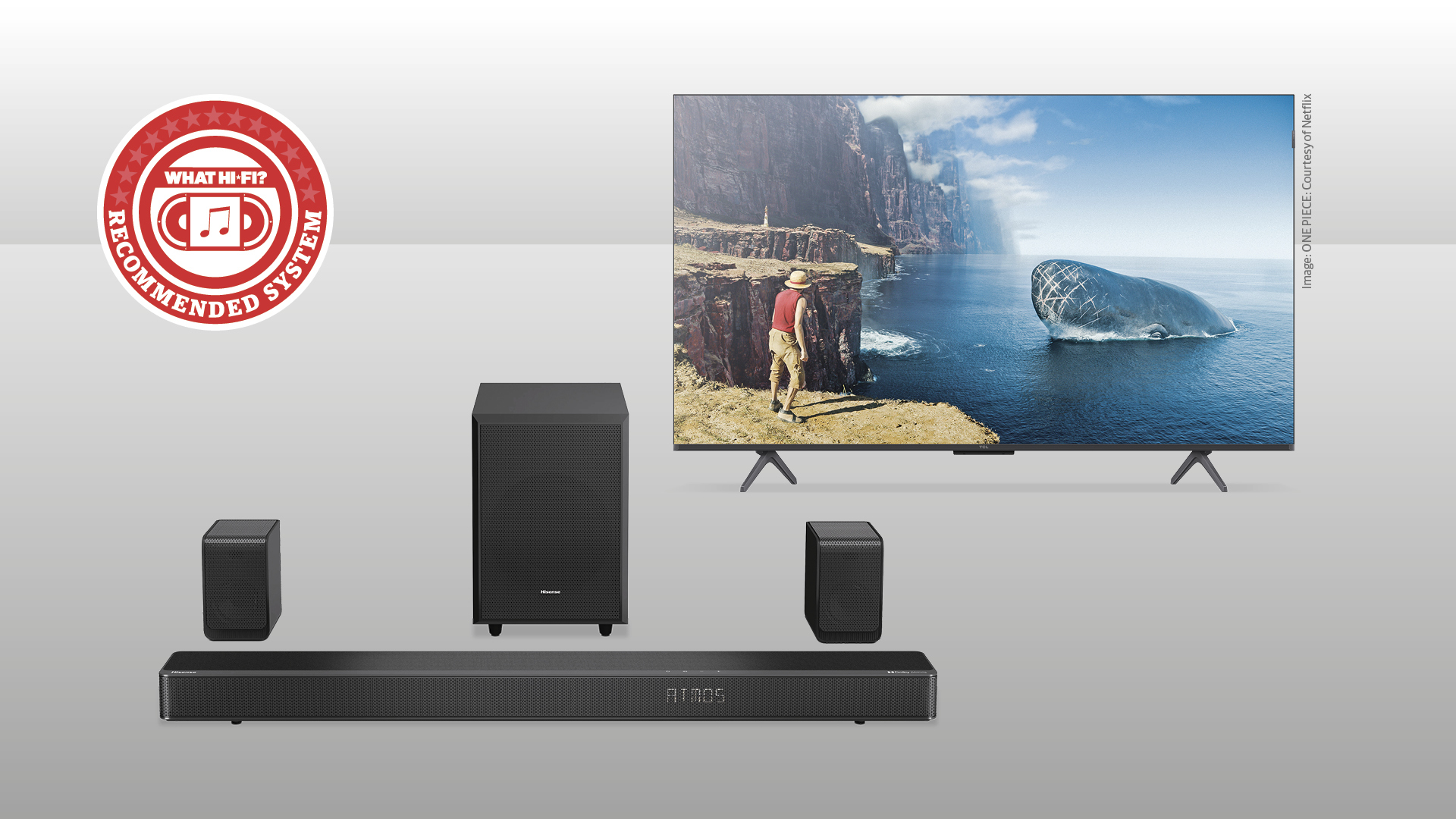What Hi-Fi? Verdict
While perhaps not a great option for serious home cinema fans, the Epson LS650 is an effective living room all-rounder
Pros
- +
Plenty of brightness and natural colours
- +
Long laser life
- +
Good Yamaha-designed sound system
Cons
- -
Very average black levels
- -
Android smart system is rudimentary
- -
Some focus issues
Why you can trust What Hi-Fi?
The EH-LS650 is the cheaper of two ultra short throw options Epson is currently selling as part of its home theatre projection range. It’s not as bright as the step-up LS800W and it can’t support as large a range of image sizes, topping out at 120 inches versus the LS800W’s 150 inches. In most other ways, though, it shares enough heritage and features with its more expensive sibling to potentially make its cheaper price look quite the bargain.
Price
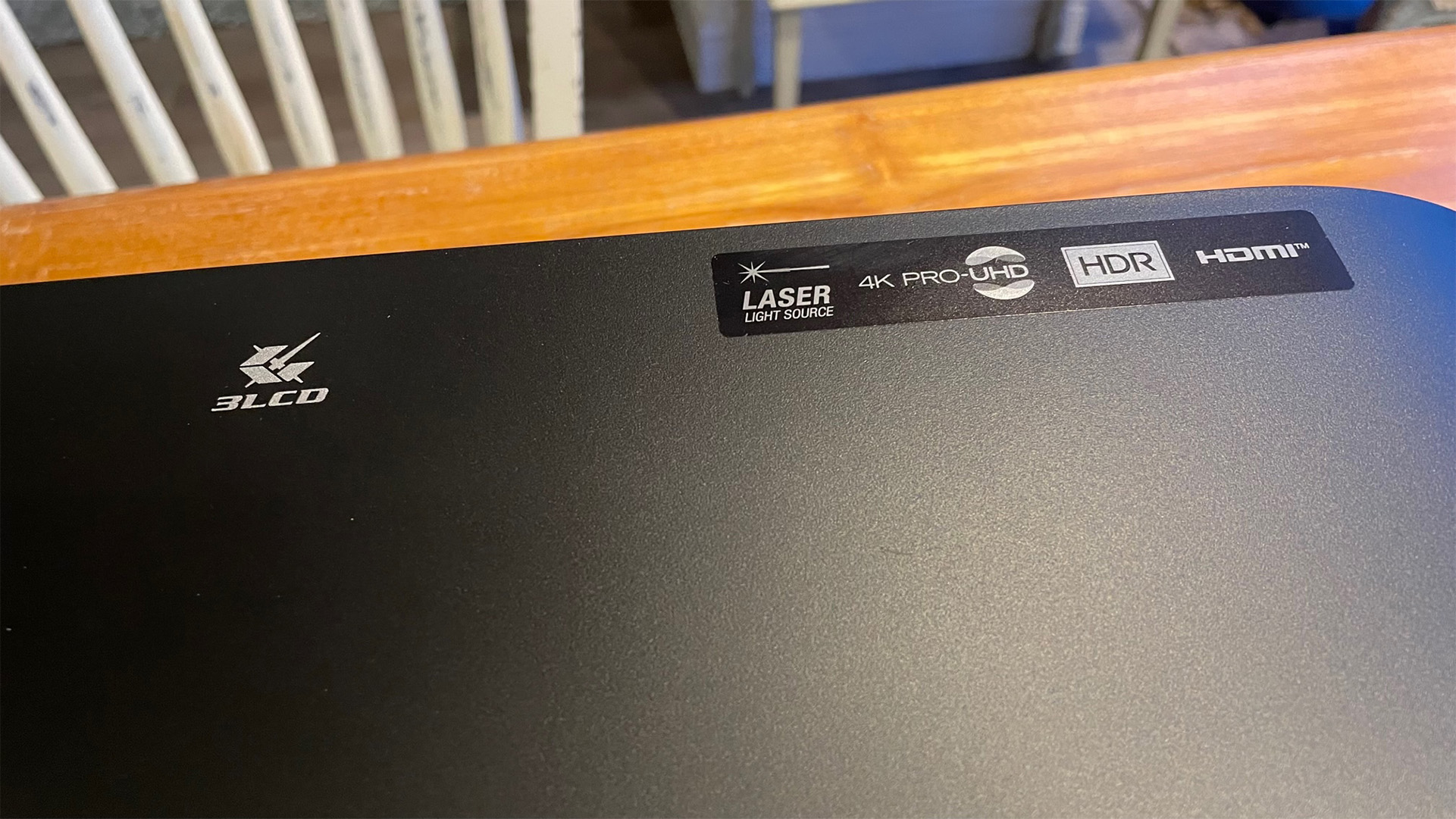
At £2200 / $2299 / AU$3999, the Epson LS650 classes as a mid-range laser projector that could end up looking either cheap or a bit expensive depending on how its performance pans out. Certainly, the hundreds of pounds/dollars it saves you against the LS800 helps it lean towards feeling like a pretty smart deal.
There are lots of non utra short throw projectors out there, even a few laser models, that offer HDR support and 4K playback as this Epson does, but for substantially less – although, of course, those won’t give you the ‘TV-like’ experience the LS650 seeks to ape, so they don’t really class as direct competitors. It’s worth pointing out that Hisense currently sells its impressive PL1 for a remarkably low price, but that model is a whole 1500 lumens less bright, making it less well adapted to bright living room set-ups.
Design

The Epson LS650 boasts a pretty archetypal short throw projector design, where a wide slot at the bottom of a large recessed area of the top edge lets out an image that’s been bounced around inside an unusually large chassis by regular affordable projector standards.
The rear edge (rear in that it’s the one that faces out into the room, rather than the side that the images appear on) hosts a built-in 2x10W speaker system adorned in an attractive grilled cover, while the rest of the bodywork of our LS650B sample wears a strokably smooth black finish. If you’d prefer a bit more light in your life, the LS650W is available for the same price and comes in a crisp-looking white colour.
The Epson LS650 ships with a cute remote control that features a white main navigation ring, microphone and home buttons to make them easier to see in a dark room. It also provides simple single-button access to all the key features and menus you’ll need once you’ve gone through the initial set-up routines.
Features

The Epson LS650’s headline features, of course, are its UST design, LCD rather than DLP optics, laser lighting engine, and ability to support 4K and high dynamic range signals. There’s a fair bit of extra meat to put on these bare bones too, though. Starting with the impressively potent 3600 lumens of peak brightness it claims to produce.
The latest hi-fi, home cinema and tech news, reviews, buying advice and deals, direct to your inbox.
This halves in the Eco output mode you’ll need to use to get the 20,000 hours of life Epson claims for the laser lighting system, but having 3600 lumens at least available for getting more value out of HDR sources and combatting potentially high living room ambient light levels is still very promising.

Projector type Laser lit LCD UST
Screen size 60-120 inches
Processing Epson ‘Fine’ and ‘Fast’ processor modes, plus frame interpolation motion processing options
Native resolution Supports 4K via pixel shifting
Input lag with 60Hz in ‘Fast’ processing mode 27.4ms
Dimensions 153 x 467 x 400mm
Epson backs this high brightness up with a huge claimed 2,500,000:1 contrast ratio – though experience suggests that this will prove to be a very optimistic claim that won’t be seen in any remotely ‘real world’ context. Not that we wouldn’t love to be proved wrong.
A projector as bright as the LS650 is going to need some pretty robust cooling fans to keep it from burning up. These are claimed to run with a potentially disruptive maximum noise level of 36dB, but actually, we seldom feel aware of their presence, even during HDR viewing, from normal viewing distances.
As we’re starting to see with many projectors these days, especially UST models, the LS650 ships with a ‘Smart TV’ streaming platform built in. In this case, it’s Android TV – which turns out to be a mixed blessing. In the plus column, it delivers effective voice control and a large number of apps, but unfortunately, there are also some limitations when it comes to streaming service nativisation and the provision of some local UK/European streaming services. So much so that you’re probably better off adding an external streaming device, such as an Amazon Fire TV Stick.
Epson very clearly positions the LS650 as a gaming as well as home theatre projector, so it’s good to find it capable of 4K/60Hz graphics and a low (by projector standards) 1080p/60Hz input lag time of 27.4ms. Note that since the LS650 doesn’t provide a dedicated Game picture preset, you’ll need to make sure you’ve turned off the motion interpolation feature and set the projector’s processing system to ‘Fast’ for the best gaming results.
The very existence of those two processing options, though, also points to how seriously the projector takes its home cinema duties; this is definitely not a gaming-first, movies-second projector.
The LS650’s connections comprise two HDMI ports (one with ARC capability), three USB 2.0-A inputs, a remote control input, and built-in wi-fi. There’s no support over the HDMIs or streaming services for the premium Dolby Vision and HDR10+ high dynamic range formats; you can only enjoy the regular HDR10 and HLG flavours of HDR. This is fair enough, though, on such a reasonably priced laser UST model.
Setting up UST projectors can be tricky and time-consuming. The LS650, however, keeps things relatively straightforward by offering both an automated set-up feature using an app on your phone, or enabling you to tweak the image geometry manually using a simple four-point set-up screen. The only catch with such a basic geometry adjustment is that it’s possible to mess the picture’s aspect ratio up if you’re not careful.
It turns out, finally, that the built-in 2 x 10W sound system has been designed with renowned audio brand Yamaha, so hopefully its audio will join many of Yamaha’s soundbars in punching above its speaker weight. Epson is sufficiently confident about the speaker performance to provide the LS650 with the option to turn off the projector’s optics so that it can just function as a standalone smart speaker.
Picture
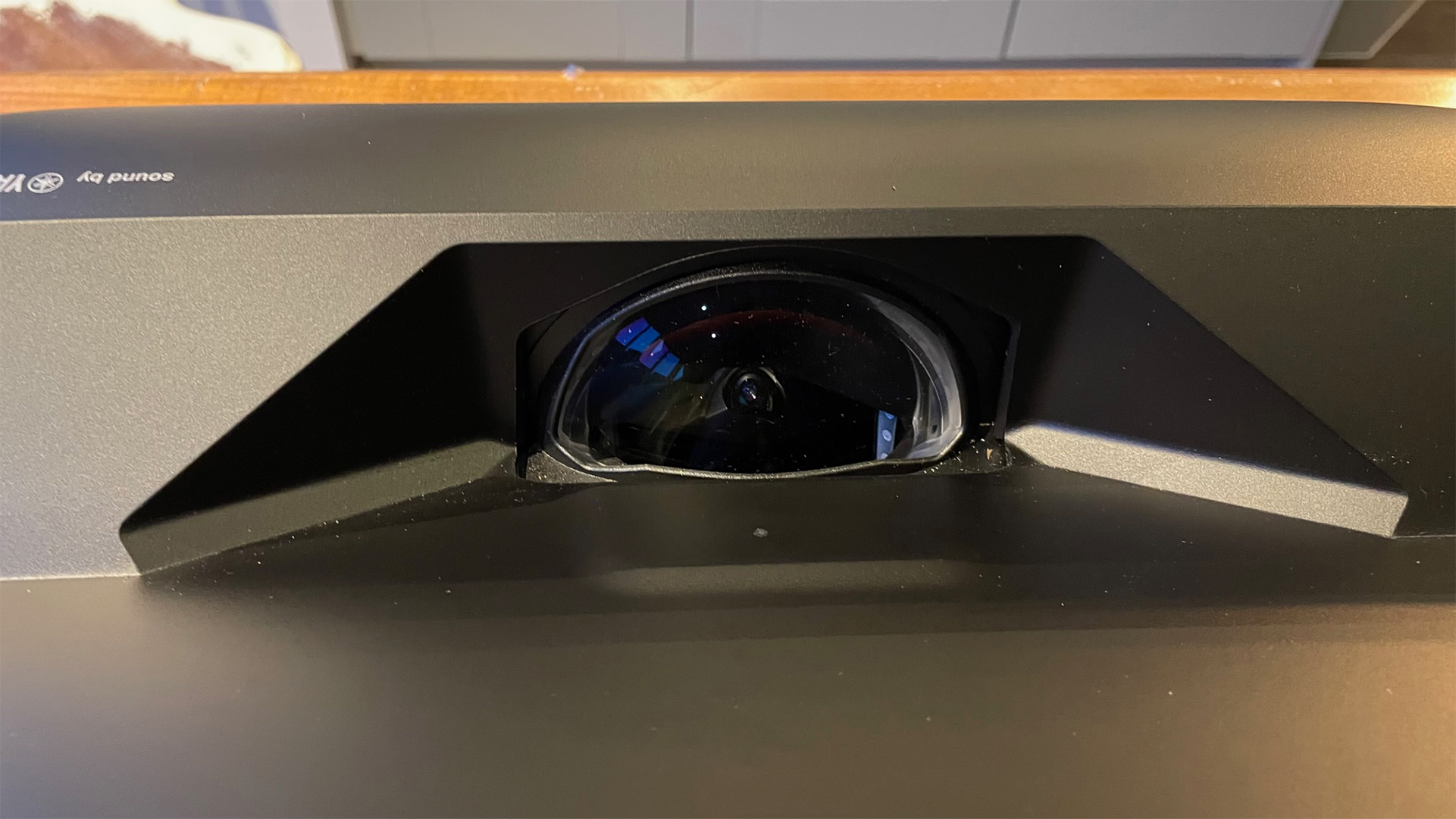
In many ways, the Epson LS650 is an enjoyable watch – especially when you’re using it in a room with a bit of ambient light to contend with.
That impressive 3600 lumens of brightness helps pictures punch through ambient light while retaining an impressive amount of punch and pop – especially if you’re able to partner the projector with a decent ambient light-rejecting screen (Epson actually offers a couple of its own under the accessories part of its website).
The brightness also, of course, makes images look pretty spectacular in dark rooms, and enables the LS650 to do what projectors typically find so difficult: give at least some credibility to high dynamic range playback. At least to the extent that HDR content looks brighter and more vibrant than SDR.
The LS650’s LCD nature means that it does all this, too, without suffering at all from the colour-striping ‘rainbow effect’.
The brightness feeds into engagingly natural-looking colours with HDR material too. The LS650B doesn’t carry a wide colour gamut system, so can’t achieve the same sort of vibrancy we’ve seen from recent premium UST projectors from AWOL Vision and Leica. But actually, the saturations it does serve up feel more balanced in the sense that no tones or primaries appear to have any prominence over the rest. This makes colours feel more relaxing and, thanks to their consistency, immersive to watch.
In fact, we find the LS650’s colours, especially in its Film preset, to be more overall consistent than those of Epson’s step-up LS800. The extra brightness of that more powerful model can start to make tones look a little strained at times.
Although it doesn’t provide a truly native 4K picture, using pixel shifting to generate a 4K effect, the LS650’s pictures still look in most areas to be crisp and detailed. The general clarity isn’t besmirched by excessive noise or difficulties handling natural film grain, either, despite the projector sporting a reasonably powerful video processing engine.
Talking of processing, the LS650’s motion processing does a surprisingly good job on its Low setting of taking the edge off judder with 24p sources without either generating lots of unwanted digital side effects or making the image look too processed. Judder without motion processing on is a little more noticeable during 24p viewing on the LS650 than we’d have ideally liked, but it’s certainly not unbearably distracting for the movie purists who refuse to entertain motion processing under any circumstances.
Some Epson projectors in recent years have struggled with brightness stability when applying some of their image auto-optimisation features, but the LS650 holds up well on this count. There’s really no noticeable shifting of brightness during dark scenes – even if you use the ‘fast’ rather than fine image processing option and have the useful Scene Adaptive Gamma option (essentially a static tone mapping adjustment) set to a fairly aggressive five or six level.
There are, though, a couple of significant limitations to the LS650’s picture performance that mean we can’t give it an unqualified recommendation. First and worst, it doesn’t adapt to proper movie night dark room viewing very well, chiefly because it can’t deliver dark scenes with remotely convincing black levels. Instead, everything bottoms out into a grey wash that leaves the image looking flat and insipid.
This becomes much less of a problem in ambient light, of course, and helpfully the grey look to dark scenes doesn’t stop the LS650 from producing decent amounts of subtle detail in dark areas. It’s also the case that because it’s slightly less bright, the LS650 produces slightly better black levels than its more expensive Epson EH-LS800W sibling. It’s still a shame overall, though, that the projector can’t adapt better to dark as well as light room viewing.
The other issue is that while the picture looks sharp across most of its screen area, the top corners can look a little soft and out of focus. There’s no focus adjustment to help counter this as you get with the recently reviewed AWOL Vision LTV-3500 Pro, and nothing we could do with the projector’s physical positioning fully resolved it. It’s especially noticeable with high-resolution gaming sources, which is a pity as for the most part, the LS650 is actually a really fun big-screen gaming display.
Sound
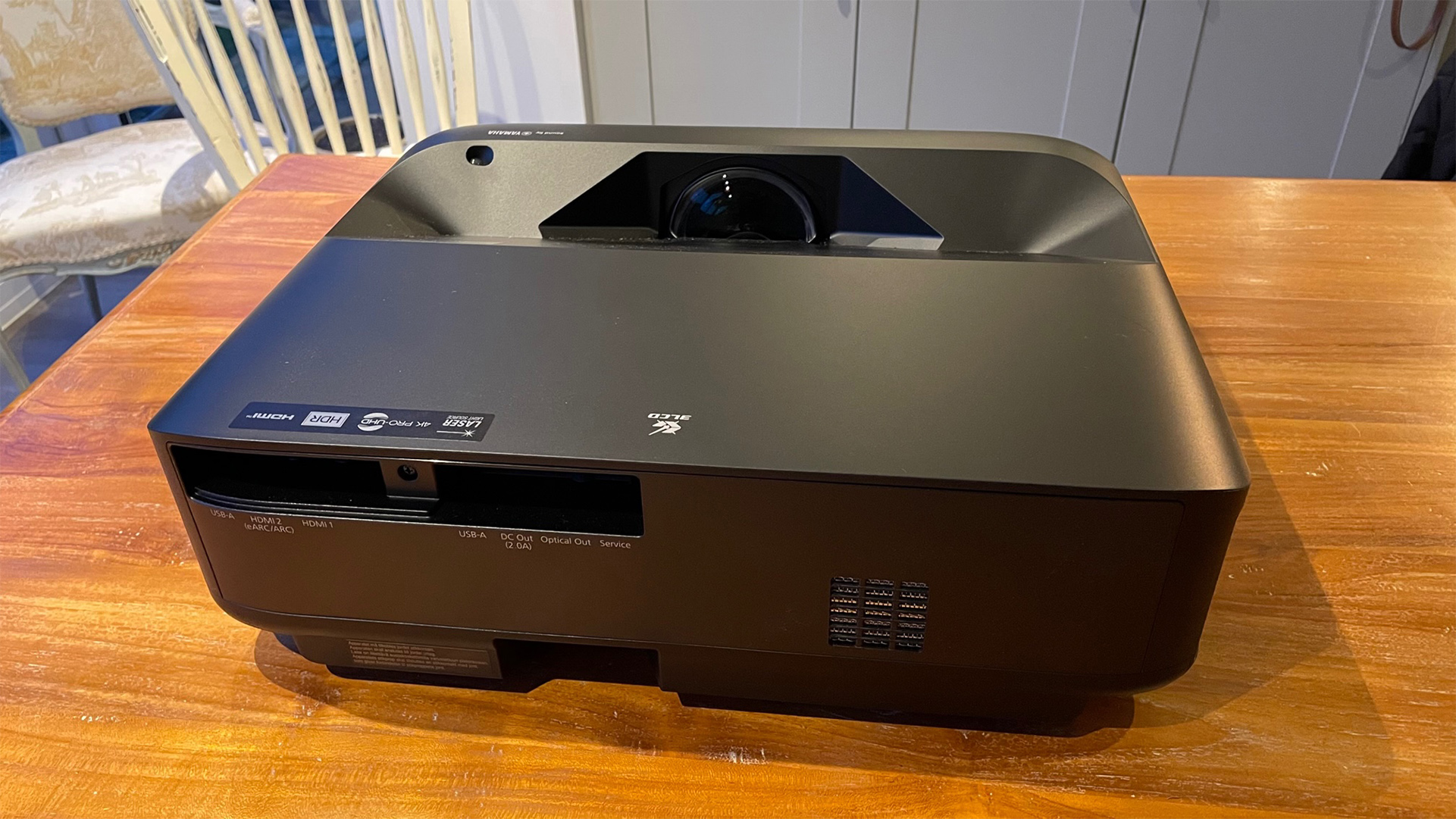
The Yamaha influence on the LS650’s audio system seems to have reaped useful dividends. The 2 x 10W speakers punch above their weight in a number of ways, starting with a really pleasantly rounded tone that leaves no place for harshness or thinness to creep in. Even during our favourite film-soundtrack loud bits.
The sound also escapes cleanly and effortlessly from the projector’s bodywork, creating a reasonably large soundstage that enjoys some genuine and enjoyable forward impact as well as spreading out to the left and right.
Vocals, be they male or female, are always clear and credible, but at the same time are believably contextualised in the mix, rather than sounding unnaturally bright or exaggerated.
In a perfect world, the speakers would be capable of delivering both a bit more raw volume and deeper bass. But perfect was never likely to be on the cards with a speaker system built into such an affordable projector, and we’d rather the LS650 work cleanly within its limitations than push things to a point where distortions and distractions start to creep in.
Verdict

While it’s a pity the LS650 doesn’t have the black levels to adapt to proper dark room movie nights, its pictures are bright, colourful and consistent enough to represent an affordable alternative to an ultra-large TV in fairly regular living room conditions, while its Yamaha-influenced sound also gives most TV sound systems a run for their money.
SCORES
- Picture 4
- Build 4
- Features 4
MORE:
Read our review of the Epson EH-LS800W
Also consider the Hisense PL1
Read our Xgimi Horizon Ultra review
Best projectors: Full HD, 4K, and short-throw
What Hi-Fi?, founded in 1976, is the world's leading independent guide to buying and owning hi-fi and home entertainment products. Our comprehensive tests help you buy the very best for your money, with our advice sections giving you step-by-step information on how to get even more from your music and movies. Everything is tested by our dedicated team of in-house reviewers in our custom-built test rooms in London, Reading and Bath. Our coveted five-star rating and Awards are recognised all over the world as the ultimate seal of approval, so you can buy with absolute confidence.
